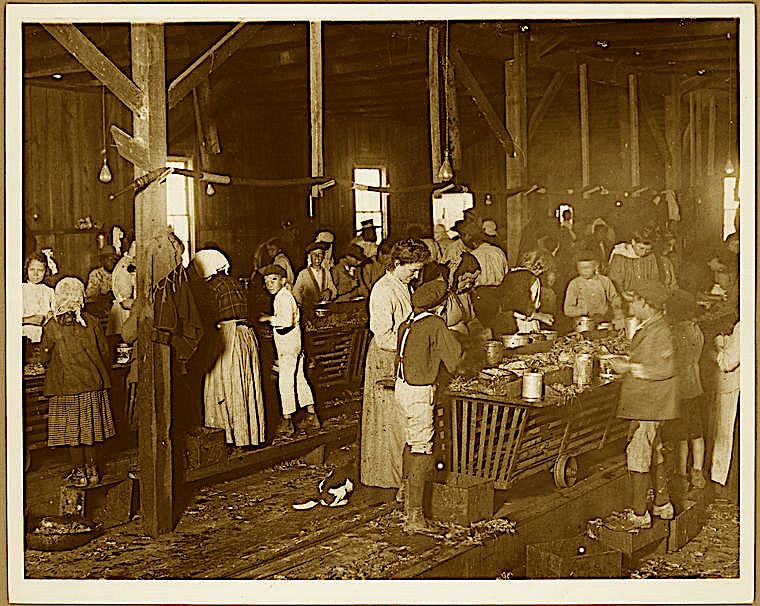MARIANI’S
Virtual
Gourmet
September 4,
2022
NEWSLETTER
IN THIS ISSUE
WHAT MAKES A GOOD BARTENDER?
By John Mariani
NEW YORK CORNER
8282
By John Mariani
ANOTHER VERMEER
CHAPTER 35
By John Mariani
NOTES FROM THE WINE CELLAR
TRAPICHE OF ARGENTINA
By John Mariani
❖❖❖
 author of A
Divine Language: Learning Algebra,
Geometry, and Calculus at the Edge of
Old Age. Go to: WVOX.com.
The episode will also be archived at: almostgolden.
author of A
Divine Language: Learning Algebra,
Geometry, and Calculus at the Edge of
Old Age. Go to: WVOX.com.
The episode will also be archived at: almostgolden.
❖❖❖
WHAT MAKES A GOOD BARTENDER?
By John Mariani

There are several kinds of
bartenders in the world and most, who just pour
shots and draw beer, have little interest in the
others, which include those at cocktail bars,
hotel bars, restaurant bars, even tiki bars,
where the wilder the cocktail the better. (I
really don’t remember if Sam Malone (above)
ever made cocktails in Cheers.)
But the number of truly excellent, which means
devoted, bartenders in the world are very few
and far between, and those who in the past ten
years have adopted the odious sobriquet
“mixologist” show more pretense than knowledge
about how to make a good drink.
 Aside from
at low-end bars, those who cater to a somewhat
more sophisticated cocktail crowd require at least
the most basic knowledge of bar tending. But I’ve
found that, at least in this country, bartenders
get lazy and turn out the most popular drinks for
their known clientele without giving any thought
to others who have different tastes. Martinis—gin
or otherwise—are no brainers, despite the absurd
lengths some confirmed Martini drinkers go to
eschew even the faintest flavor of dry vermouth.
How is a bartender to know what a Martini
fanatic’s tolerance for vermouth is when he asks
for “extra dry”?
Aside from
at low-end bars, those who cater to a somewhat
more sophisticated cocktail crowd require at least
the most basic knowledge of bar tending. But I’ve
found that, at least in this country, bartenders
get lazy and turn out the most popular drinks for
their known clientele without giving any thought
to others who have different tastes. Martinis—gin
or otherwise—are no brainers, despite the absurd
lengths some confirmed Martini drinkers go to
eschew even the faintest flavor of dry vermouth.
How is a bartender to know what a Martini
fanatic’s tolerance for vermouth is when he asks
for “extra dry”?
Beyond the Martini, and perhaps the Bloody
Mary, which annoys lazy bartenders because it
requires at least eight ingredients, an inordinate
number of bartenders are ignorant of classic
cocktails like the Daiquiri, the Old Fashioned,
the Whiskey Sour, the Manhattan and the Rob Roy.
Some of this ignorance comes from refusing to
squeeze fresh citrus fruits in favor of
pre-bottled commercial stuff, more than 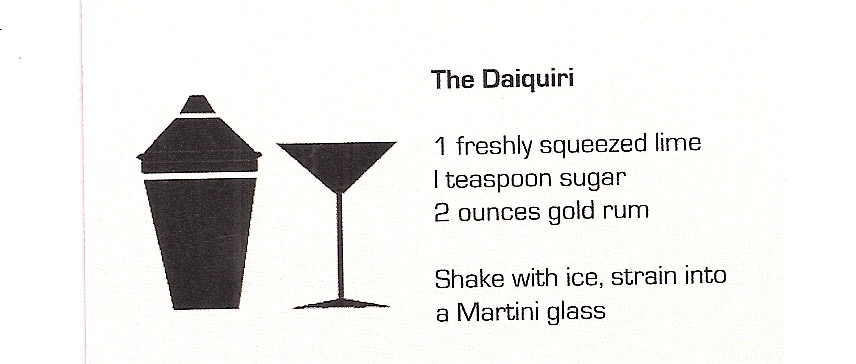 likely flavored with some kind of
sweetener.
likely flavored with some kind of
sweetener.
The absence of a good fruit juicer, even a
reamer, has gotten endemic in American bars.
Forget about finding a muddling utensil to extract
the pulp and oils from the fruit. This is why I
have printed on the back of my business card the
recipe for a Daiquiri—not my
Daiquiri, not Hemingway’s Daiquiri,
not
a frozen
Daiquiri, but just a classic
daiquiri made with fresh lime juice, sugar or
sugar syrup and rum—the kind my father would in
his day have readily gotten at any bar in the
world.
What could be simpler? Except that without
the instructions on my card (right), at
least 75% of bartenders would screw the drink up;
some, even though my card specifies fresh
juice, just ignore it, while others, whose
literacy and eyesight are apparently failing in
equal measures, cannot read the words “strain into
a Martini glass,” which I accompany with an
illustration of a Martini glass. Despite this, I
have had lousy daiquiris brought to me on the
rocks or in a highball glass.
 I don’t ask that a bartender
stock 20 different bourbons, single malt Scotches
or Japanese whiskeys behind the bar, or even
white, gold and aged rums. But the selection
should be judicious and aim to please 90% of
customers’ requests. A friend of mine who only
wants to drink basic Scotches like Dewar’s, and
has no interest in $50-a-pop single malts, has
often been given no option. Yet, there will be a
dozen different tasteless vodkas on the shelves,
along with a pitiful spiced rum with a cackling
pirate on the label.
I don’t ask that a bartender
stock 20 different bourbons, single malt Scotches
or Japanese whiskeys behind the bar, or even
white, gold and aged rums. But the selection
should be judicious and aim to please 90% of
customers’ requests. A friend of mine who only
wants to drink basic Scotches like Dewar’s, and
has no interest in $50-a-pop single malts, has
often been given no option. Yet, there will be a
dozen different tasteless vodkas on the shelves,
along with a pitiful spiced rum with a cackling
pirate on the label.
An increasing number of beautifully
produced books for bartenders go
overboard in describing the various utensils,
shakers, kinds of glassware, bar knife and ice
tongs. One new British book by Zoe Burgess, called
the Cocktail
Cabinet: The art, science and pleasure of mixing
the perfect drink, spends 40 pages on such
introductory material, which is like telling a
football player he needs pads, cleats, helmet and
face guard. This same book spends a full page on
“Sour becomes our core” and another on “the value
of foam,” and contends a classic Bloody Mary
should contain pickle juice (!), spiced tomato
juice but no horseradish. Not surprising, then,
that the authors wholly neglect to inform the
reader of the origins of the cocktails under
consideration.
Other books on the shelves spin fantasies
of cocktails containing all manner of
spices, seasonings and vegetables that, once
tasted, cause either palate stress or a quick
decision never to order one again.
manner of
spices, seasonings and vegetables that, once
tasted, cause either palate stress or a quick
decision never to order one again.
There are, of course, bartender schools,
but it seems unlikely most American bartenders
have ever matriculated at one. Many, of course,
are chosen for their looks and sex appeal (see the
movies Cocktail
and Coyote
Ugly: right), or perhaps for their
ability to handle drunken customers or those
weeping on the bar (see Lost Weekend).
Then there’s that grotesque farce of a show Bar Rescue (left), in
which a loudmouth named Jon Taffer walks into a
bar that is abysmally dysfunctional and within 30
minutes turns it into the Bar at The Ritz.
 It
would take me a moment to think of my favorite
bartenders in the U.S., but I can easily come up
with half a dozen in Europe, where, whether you
want to call bartending an “art” or not, the job
is considered a true profession perfected over
years to serve a guest the best possible drinks,
and according to his wishes. Most of these are,
for good reason, in hotels in major cities (though
one of the best I’ve ever found was in a remote
resort in Big Sky, Montana). This seems due to the
management’s requisite that the bartender has the
same professionalism as any front man within the
hotel, which goes for the way the
bartender is dressed—by tradition in a white
jacket, dark slacks and tie—and groomed. Such
people must be affable, never rude, highly
informed about their clientele and have a deep
knowledge of liquors and wines.
It
would take me a moment to think of my favorite
bartenders in the U.S., but I can easily come up
with half a dozen in Europe, where, whether you
want to call bartending an “art” or not, the job
is considered a true profession perfected over
years to serve a guest the best possible drinks,
and according to his wishes. Most of these are,
for good reason, in hotels in major cities (though
one of the best I’ve ever found was in a remote
resort in Big Sky, Montana). This seems due to the
management’s requisite that the bartender has the
same professionalism as any front man within the
hotel, which goes for the way the
bartender is dressed—by tradition in a white
jacket, dark slacks and tie—and groomed. Such
people must be affable, never rude, highly
informed about their clientele and have a deep
knowledge of liquors and wines.
They can work fast but always carefully,
with none of that “when we get slammed on Saturday
night, we’re lucky if we can pour a beer right”
attitude. Cocktails take a while to make
correctly, though these days the newly concocted
variants add so many more components as to delay
the process as the bartender measures an
eyedropper of liquid into a teaspoon.
Aside from always using good quality house
liquors, a good bartender knows that using those
godawful hoses that shoot  up to a dozen flavored
sodas through them is counterproductive to a good
drink. Second, a good bartender has a particular
skill for obtaining the ice cold temperature that
makes an enormous difference. James Bond is right
when he asks for his vodka Martinis “shaken not
stirred,” for, although shaking may make for a
slightly greater degree of dilution, stirring is
an improbable way to achieve icy coldness.
up to a dozen flavored
sodas through them is counterproductive to a good
drink. Second, a good bartender has a particular
skill for obtaining the ice cold temperature that
makes an enormous difference. James Bond is right
when he asks for his vodka Martinis “shaken not
stirred,” for, although shaking may make for a
slightly greater degree of dilution, stirring is
an improbable way to achieve icy coldness.
A good bartender keeps a very clean,
well-lighted bar, and while he probably
has no control over a music playlist, he should
try to keep the noise level down in order to
encourage conversation of a kind not possible in
shots-and-beer joints, singles bars or college
taverns.
A good bartender has to have a keen sense
of a guest’s limit and, in the most cordial way,
dissuade him or her from further indulging. A
bartender is not a bouncer, even if he may need to
signal one for a belligerent customer. By the same
token, a guest obviously inebriated but quiet or
appearing very sad will need a sympathetic ear
like that of a confessor who has heard every story
and every sin before. A good bartender is a
therapist who does not charge $175 an hour.
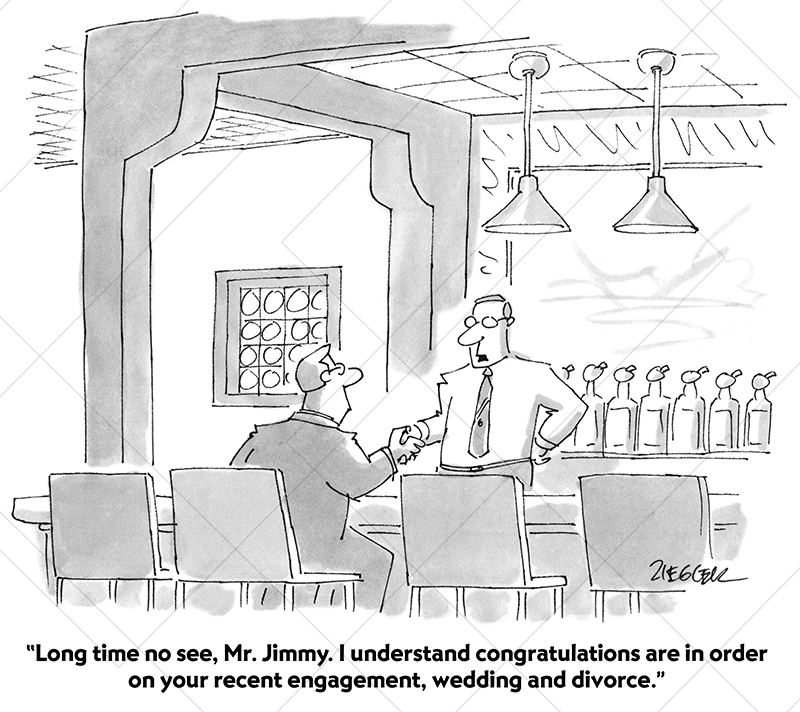 If
anyone, especially a bartender who wants to up his
game, seeks to meet a few who carry on the
profession at an Olympic level, I would send them
to London, Paris or most hotel bars in Italy. The
bar man at The Ritz in London is indeed an
inspiration, one who must not only deal with
foreigners but with London’s own bewildering
social status concerns. In Rome,
the
If
anyone, especially a bartender who wants to up his
game, seeks to meet a few who carry on the
profession at an Olympic level, I would send them
to London, Paris or most hotel bars in Italy. The
bar man at The Ritz in London is indeed an
inspiration, one who must not only deal with
foreigners but with London’s own bewildering
social status concerns. In Rome,
the 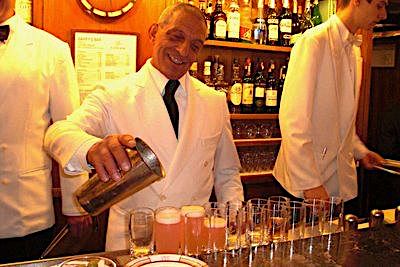 barrista
may mean the fellow behind the coffee counter who
also pours drinks, but also refers to the expert
bartender at places like The Hassler, The Grand
and The Cavalieri Hilton; in Venice, he will be
found at the Gritti Palace and the veterans at
Harry’s Bar (right). In Paris, my favorite
pro of them all is Colin Peter Field, who has been
at The Ritz’s Hemingway Bar for decades and is
inextricable from it. His book, The Ritz
Paris: Mixing Drinks, A Simple Story (2010)
is as much history and lore as it is a guide to
making perfect cocktails, each amply described
with headnotes. (Colin and I have for years
battled over the origins of the Bloody Mary.) He
takes notes on every guest who likes one of his
creations, which not only helps him recall the
drink but the time it was created.
barrista
may mean the fellow behind the coffee counter who
also pours drinks, but also refers to the expert
bartender at places like The Hassler, The Grand
and The Cavalieri Hilton; in Venice, he will be
found at the Gritti Palace and the veterans at
Harry’s Bar (right). In Paris, my favorite
pro of them all is Colin Peter Field, who has been
at The Ritz’s Hemingway Bar for decades and is
inextricable from it. His book, The Ritz
Paris: Mixing Drinks, A Simple Story (2010)
is as much history and lore as it is a guide to
making perfect cocktails, each amply described
with headnotes. (Colin and I have for years
battled over the origins of the Bloody Mary.) He
takes notes on every guest who likes one of his
creations, which not only helps him recall the
drink but the time it was created.
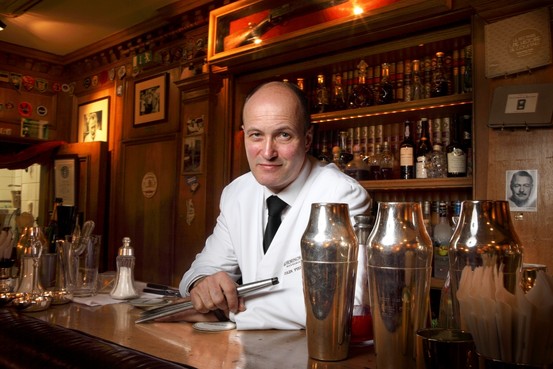 Colin (left) is a highly literate
fellow and a wonderful but discreet raconteur, and
he describes in his book what to me is the ideal
for a good bartender:
Colin (left) is a highly literate
fellow and a wonderful but discreet raconteur, and
he describes in his book what to me is the ideal
for a good bartender:
“While cocktail bartenders of the past used
to only speak when spoken to, today’s bartender
must be both a showman and a host. He must create
the moment and keep the show running, just like
the host at the Oscars. He must be generous with
himself and his own life and offer a
divertissement to his clients through his personal
experiences, stimulating conversation and
interaction. They can thus voluntarily forget
their own problems and jump inside a ‘second life’
for the time that they are with him.”
❖❖❖
8282
929-837-0360
By John Mariani
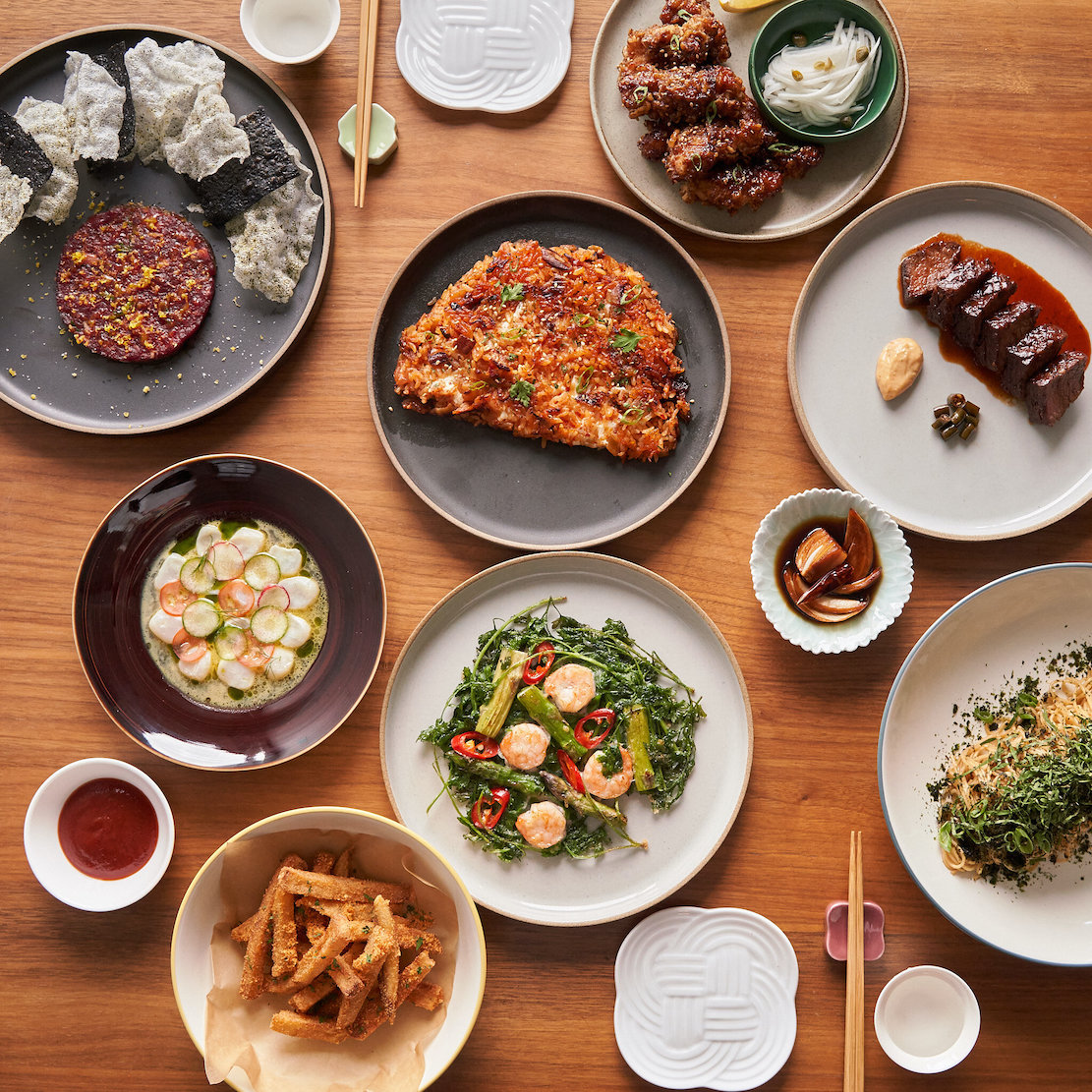
Nothing improves a
derelict neighborhood
more than a good restaurant. It throws light
onto the street, inside there is
color and the sound of people having a good
time, and sometimes the aromas
float out from the open door. Nowhere is
this more true than on New York’s
Lower East Side, which began in the 19th
century as a tenement refuge for
immigrants but devolved into a post-war
drug-drenched no man’s land.
 Today
“Loisaida” teems with life, driven
by youth who now feel at ease strolling the
streets at any time, and much of
that reclamation is owed to the scores of
small restaurants like 8282, which
for the moment has outdoor seating from
which to watch the passing parade of
people of enormous diversity and downtown
fashion.
Today
“Loisaida” teems with life, driven
by youth who now feel at ease strolling the
streets at any time, and much of
that reclamation is owed to the scores of
small restaurants like 8282, which
for the moment has outdoor seating from
which to watch the passing parade of
people of enormous diversity and downtown
fashion.
8282 really is a labor of love
because Chef Bong Le Jo
(formerly at Perry Street and Dovetail) is
partnered with his fiancée, Jee Kim
(previous owner of Pado). The number
refers to South
Korea’s country code, +82, as well as a
get-it-done phrase that means
“quickly.” Their intent is to modernize
Korean food, which has become the
cuisine of the moment and is far from the
predictable (though delicious)
brazier-cooked meat menus at traditional
Korean restaurants. But it is clear in
every bite that Bong’s cooking is wholly
Korean inspired, for while Asia food
culture shares many flavors, 8282’s bears
little resemblance to Chinese,
Japanese, Indonesian or Thai.
It’s a small room of just 33 seats,
pleasantly decorated with a small
bar to one side. At a peak hour it can be
loud butnot so much that
conversation is restricted. The service,
overseen by Kim, is amiable and
everything is explained with a proud fervor.
There are, of course, several
newly invented cocktails and several sojus,
which is a kind of sweet, 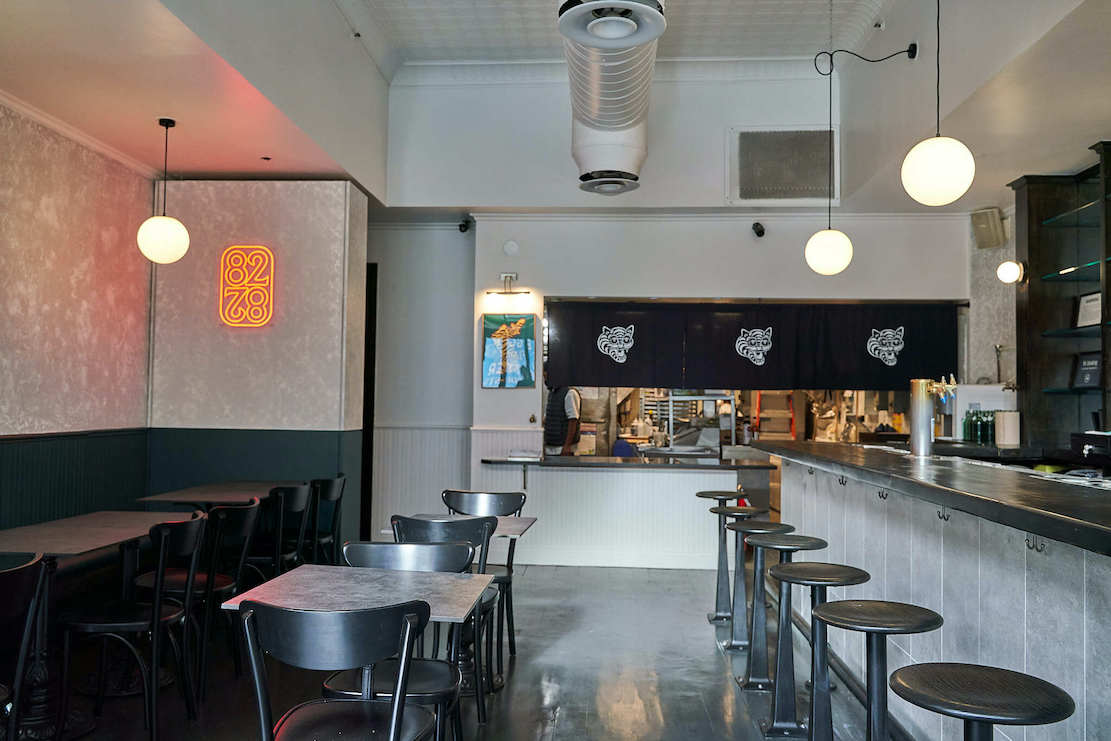 grain-based
sake/vodka.
grain-based
sake/vodka.
The short menu—smartly so for a small
kitchen and dining room—is divided
into two categories: small plates called Anju,
which means food you eat with alcohol, and
larger Banju plates meant to be
shared. It’s really quite amazing that
Bong can incorporate so many disparate
elements into each dish without any
tasting like another; add to that their
vibrant color and rustic plating and it
shows care for every detail.
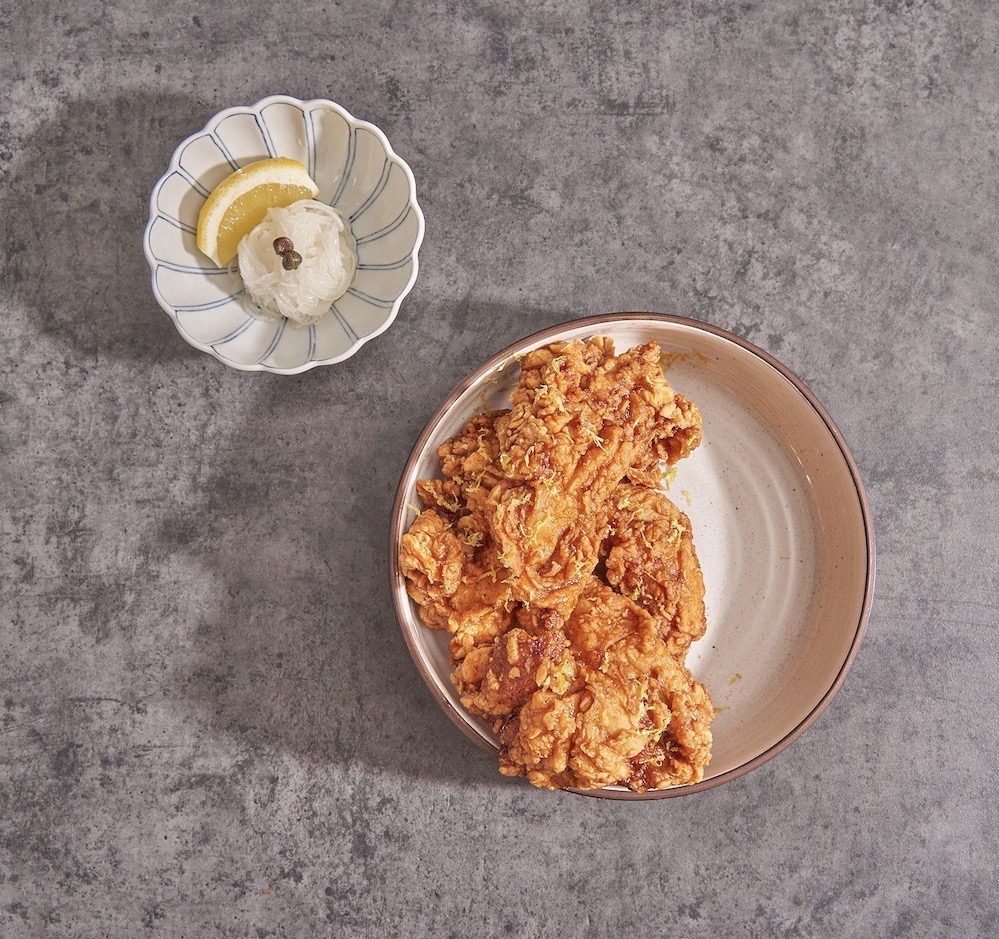 Among the first items is a colorful
spring pea crudo (a word that seems to
have knocked sashimi out of the ring) of
aged, raw hiramasa (yellowtail)
enlivened with a lemon yuzu vinaigrette and topped
with very tangy soy pickled pepper,
sugar snap peas for texture and pea puree
($19).
Among the first items is a colorful
spring pea crudo (a word that seems to
have knocked sashimi out of the ring) of
aged, raw hiramasa (yellowtail)
enlivened with a lemon yuzu vinaigrette and topped
with very tangy soy pickled pepper,
sugar snap peas for texture and pea puree
($19).
Bluefin tuna tartare ($25) is diced
and mixed with a sesame aïoli that
gives it a real creaminess and comes with
crisp, fried seaweed chips. The
fermented cabbage beloved by Koreans
called kimchi
is made with tomato as
part of a salad of red beets and nubbins of
house-made burrata, basil, perilla
mint and pistachio ($16).
It’s impossible to resist a dish
called “Boneless K.F.C”—fried chicken
thighs tossed in a Korean soy garlic sauce,
served with a small helping of
pickled radish noodles ($16). Littleneck soojebi
is a bowl of tender steamed clams ($20),
but
the real delight is in the potato and
pumpkin noodles, butter scallion,
ginger and  black
pepper soy sauce that you wish you had bread
with which to sop
it all up.
black
pepper soy sauce that you wish you had bread
with which to sop
it all up.
No
menu these
days can be without pasta,
and 8282’s entry is angel’s hair spaghetti
tossed in soy sauce with seaweed,
sesame seed crumbs, perilla
leaves
and oil ($17) that was somewhat bland. It
was suggested we add uni, which might
have added a briny flavor, but that carried
a supplement.
The subtler spicing of these small
plates prepares the palate for
stronger flavors in the banju,
like
the rich, wonderfully gooey dalgalbi
kimchee-bap of marinated, stir-fried
chicken morsels over kimchi rice laced
with cheese and chili paste ($21). You mix
the whole thing up, then scoop it
out with spoon and fork and find it’s like
nothing you’ve tasted before,
showing off the chef’s mettle for
innovation.
 Jjajang
bori-bap is a hefty
plate of seared sea scallops over nice,
chewy barley mixed
in
black bean sauce and a distinctive hint of
truffle paste ($26). Iberico pork galbi
is also a rich dish I’d eat frequently
this fall and winter, made of grilled,
soy-marinated pork, ssamjang
soy
paste and roasted broccolini with red
pepper vinaigrette ($28).
Jjajang
bori-bap is a hefty
plate of seared sea scallops over nice,
chewy barley mixed
in
black bean sauce and a distinctive hint of
truffle paste ($26). Iberico pork galbi
is also a rich dish I’d eat frequently
this fall and winter, made of grilled,
soy-marinated pork, ssamjang
soy
paste and roasted broccolini with red
pepper vinaigrette ($28).
A single dessert, called injeolmi ice
cream, is composed of layers of vanilla ice
cream, Korean multi-grain, honey,
and snow flake-like parmesan cheese, which
is more a curiosity than anything
else.
How all
these components meld together is
testament to Bong’s concentration, getting
everything in balance yet retaining
their individual flavors. It is also a
gutsier kind of Korean food than that
served at the much praised, very pricey,
uptown Atomix. 8282 fits snugly into
the Loisaida milieu and does its
best to showcase a highly personalized
cuisine without the slightest pretense.
It’s the kind of place where you look in the
window, check the posted menu,
look at each other, smile and say, “Let’s go
in.” And you will be glad you did.
Open for dinner Wed.-Sun.
❖❖❖
ANOTHER VERMEER


Zhu Lien Bang—the Bamboo Union, Taiwan
“So we’re
off to Taipei!” Katie announced to David.
“You
pulled it off?” he said. “Dobell went for it?”
“Only
because we haven’t spent much money yet—not
nearly as much as on the Capone
story. But we—well, I—have to come back with a
story that, as Dobell said, will
make the reader gasp.”
“Have
you actually arranged to see Shui?”
“No, but
I think John Coleman might intercede and vouch
for us. He
said Shui wants his story to be told.”
“I
thought you two weren’t speaking.”
“Well,
that might be a problem, but I think John
would like to re-connect so he can
pick my brain after we get back.”
“And
you’ll let him?”
“I guess
I’ll have to, if he gets us an interview with
Shui.”
David
raised his eyebrows. “Doesn’t that compromise
your precious journalistic
ethics, Ms. Cavuto?”
“I know,
I know,” said Katie, “but it’s not like I’m
asking Shui to pay for our tickets
or hotel. Let’s just say sometimes you’ve got
to work with people who don’t
have the same ideals as you do but are
basically good people. You
never did that while you were a cop?”
“All the
time,” said David, smiling. “But ethics were
pretty flexible with the
NYPD. Short
of beating a confession out
of a guy—and that went on, too—we sometimes
had to have a working relationship
with some guys we wouldn’t otherwise shake
hands with.”
Katie
looked glum, so David added, “Listen, Katie. I
think you’re one of the most
honest, ethical people I’ve ever met.
Good Catholic girl, raised right, all
that. My respect for the way you
work is very high.”
“And
mine for yours,” said Katie, giving him a fake
punch in the arm. David
wished it had been a peck on the cheek.
“So
let’s pack for China,” she said.
“First,
get the appointment with Shui, then
I’ll pack for China.”
Katie
was right about Coleman. He
was actually
happy she asked for his help and said he’d
contact Shui’s people as soon as he
got off the phone. By
the next morning
he had a positive response that Katie and
David could see Shui the following
Thursday.
“I owe
you one,” said Katie.
“Just
let’s you and I get back on track, okay? Let
me know what you find out.”
Katie
immediately felt she should give Coleman
something in return, maybe alert him
to all the violent attacks on the bidders on
her list.
But she needed to tell him in a
matter-of-fact way, because details were still
so vague.
“By the
way, John, have you noticed something strange
about what’s going on with the
principal bidders?”
“No,
what?”
“Well,
you know Lauden was put into the hospital by a
hit-and-run driver. I hear he
lost his left arm.”
“Yeah,
run down by a guy who worked for the Chinese
embassy, right?”
“Right.
But also, Stepanossky was almost killed when
he drove over a land mine in
Croatia.”
“What
was he doing in Croatia?”
“Hunting
wild boar.
David and the Interpol people
think it was either a hit by the Russian
government or the Croatians.”
“Jesus.”
“Not
only that—and I’m telling you this way off the
record—Correia was kidnapped in
Brazil and no one’s heard anything about him
for three months now. But, then,
kidnappings seem to be an everyday occurrence
down there.”
Coleman
was silent upon hearing all of Katie’s news,
then he asked, “And you think
these incidents are all related?"
“That’s
what David and I are trying to piece together.
None of them on the surface
seems to have anything to do with each other,
but they all happened since the
announcement of the Vermeer sale to people who
were among the most probable
bidders.”
“I can’t
believe this,” said Coleman. “Or at least I
can’t wrap my head around it. It
sounds so bizarre.”
“Well, I
just thought you should know what David and I
are looking into.”
“Do you
intend to mention this to Shui when you see
him?”
“I don’t
know,” said Katie. “He might think we’re out
to scare him.
Maybe we should. He’s all safe and
sound
there in Taipei.”
“And so
are Dorenbosch and Danielides?”
“So far
so good,” said Katie. “Do you think we should
mention this to Shui?”
“I don’t
know. Let me think about all this. Maybe I
should be the one to tell him before
you get there?”
“No,
this is all circumstantial at this point. And
I told you Correia was off the
record.”
Katie thought adding Ryoei
Saito to what she’d already said, but that
would have sounded overly alarmist. “I’ve
got to feel Shui out before I can tell
him any of this. It might scare the living
daylights out of him.”
“I’m
sure it would. He might be next. Okay, I’ll
keep it to myself and I promise not
to publish any of this, unless something
happens soon to Dorenbosch and
Danielides.”
“Thanks,
John.”
Coleman
just said, “Listen, I gotta go. Let me know
how it goes with Shui.”
While
preparing for the trip to Taiwan,
David was working his contacts at NYPD, the
FBI and Immigration and Naturalization Service
to find out anything more about
Shui that had not already been published or
that Katie and he had not learned
from Professor Lìu. No
one, as yet, had
confirmed that Shui had any connections within
the Taiwanese mobs, which were
involved in everything from waste disposal and
construction to stock trading,
counterfeiting, import and export, along with
the usual low-life felonies of
debt collection, prostitution and illegal
gambling.
But David
thought it would be unusual if a shady
billionaire like Shui did not
work in some ways with the mobs.
That wouldn’t be any different from a lot of
American entrepreneurs, from the
CEOs of oil companies to every real estate
developer in New York. Pay-offs were
part of the cost of doing business. Cops paid
informants all the time.
David
had also found that Taiwan had an astounding
300 gangs, some just street gangs
but the principal ones were entwined with all
aspects of Taiwanese life. Many
of the most powerful had their origins in the
employ of Chiang Kai-shek, who
used what he called the Green Gang to crush
dissidents, kidnap opponents and
arrange assassinations.
By the
1980s the largest and most powerful of these
was called Zhu Lien Bang—the Bamboo
Union—and the collusion between it, the
government and business was called heijin—Black
Gold.
According to a recent report by the Ministry
of Justice, between five and
ten percent of the members of the Taiwanese
Parliament had gang affiliations.
David
had gotten all he could from Gerald Kiley
about Shui, so he turned to a
detective who had worked undercover in the
Ghost Shadow Gang in New York’s
Chinatown.
Bobby Bao, known as “BB” to
his colleagues, was responsible for indicting
Benny Ong, known as “The
Godfather of Chinatown,” for racketeering and
murder, as well as a NYPD cop
named Michael Lee involved with the mob.
© John Mariani, 2016
❖❖❖
TRAPICHE OF ARGENTINA
By John Mariani

The
emergence of
South American quality wines in the 21st
century is quite an
achievement, given that there was so much poor
quality in the past, not least
in Argentina, where the predominant grape for
hundreds of years was criolla
chica (Mission or Pais). By the
1950s quantity
rather than quality was industry’s focus, but
although wine consumption dropped
in the 1980s and political stability was injurious
to the wineries, with a
consequent reduction in vineyard acreage, by the
1990s, with new plantings of
Malbec in the rich region of Mendoza, the industry
rebounded, led by
well-established companies like Trapiche, founded
in 1883 and now producing more
than 3.5 million cases of wine per year and
exports to more than 80 countries. To assess
modern
viticulture in Argentina—now the world’s largest
producer—I had dinner in New
York with Sergio Casé, chief winemaker at
Trapiche.
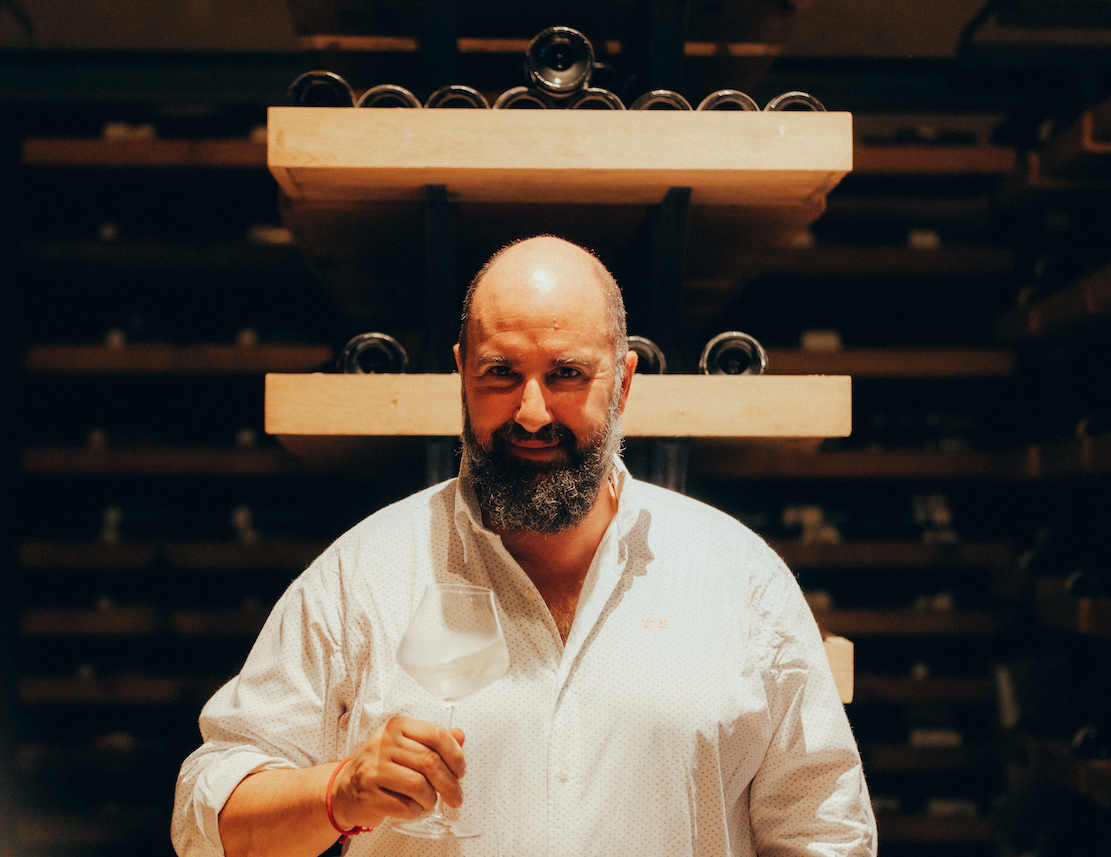 Since Trapiche was well
situated for
the rebound of Argentinean viticulture, what
long-term plans were set in motion
in the 1990s?
Since Trapiche was well
situated for
the rebound of Argentinean viticulture, what
long-term plans were set in motion
in the 1990s?
We envisioned a
plan to cultivate our vineyards in high-quality
areas, such as the Uco Valley,
while preserving the traditional areas of Mendoza
that have historically
produced outstanding wines, such as the First Zone
(Maipú and Luján, over 850
meters above sea level). With the
appropriate vineyards, the proper technology, and
the finest wines, our sales
team began to specialize and to embark on
international trips, thereby boosting
the popularity of Argentine wines in the United
States and Europe.
Besides Malbec, was Trapiche making
other wines and blends in the 1990s?
Wine
consumption in
Argentina has traditionally relied on Bonarda,
Cabernet Sauvignon, Merlot and
Chardonnay grapes, but, with the discovery of new
regions, Malbec has been
studied and consolidated on the eastern slope of
the Andes mountain range. This
boosted our confidence to venture with Sauvignon
Blanc, Pinot Noir, and
Mediterranean varieties, including Syrah,
Mouvèdre, Garnacha, Marsanne and
Roussanne.
How
long have you been making
Chardonnay and what distinguishes yours from other
South American examples?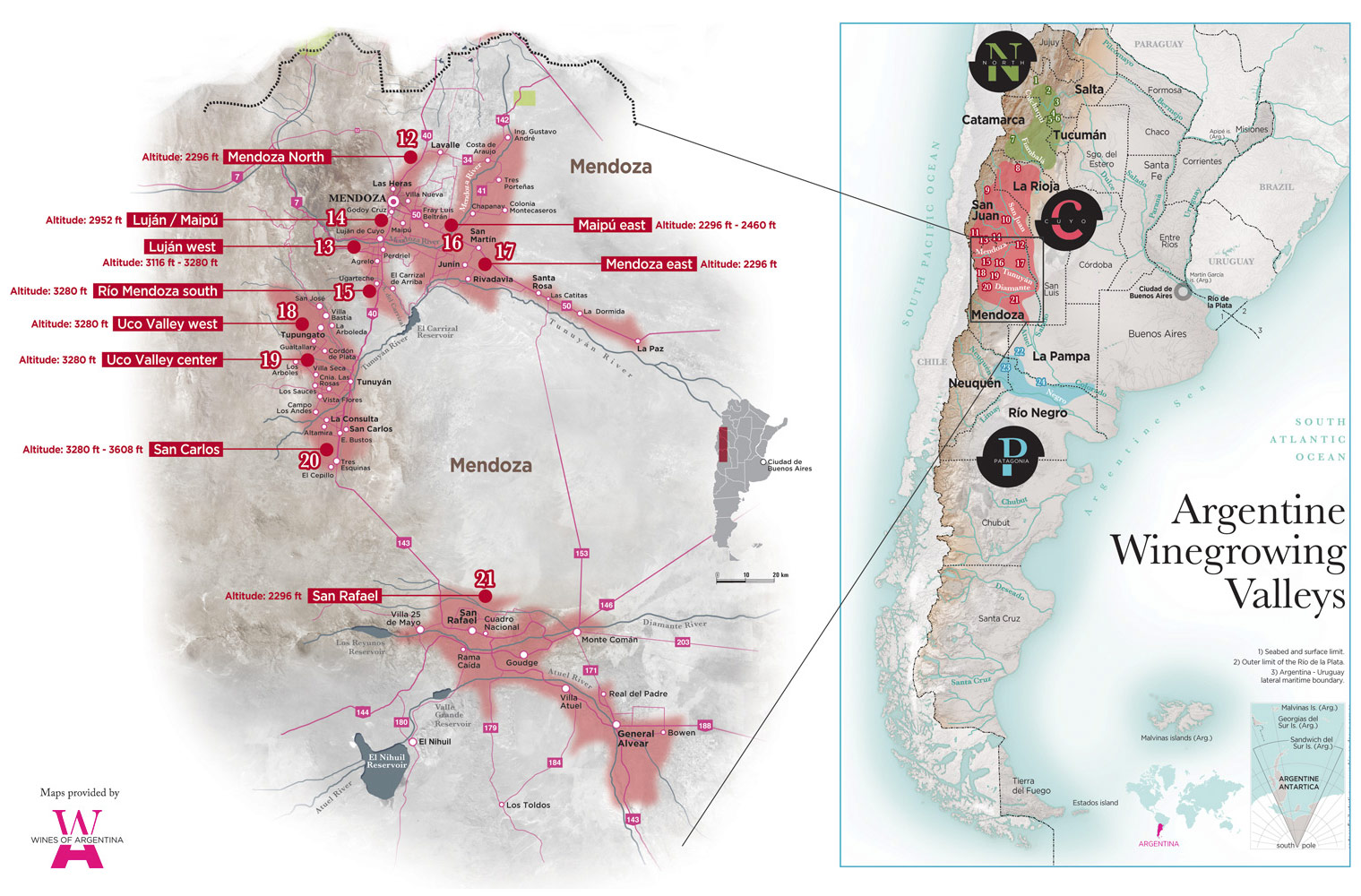
In 2000, we began
to focus more on Chardonnay. Initially, the
vineyards were located in lower
areas and were of slightly higher quality, producing
aromas reminiscent of ripe
tropical fruit and honey. However, over time,
Chardonnay was grown in higher
altitudes of the Uco valley, and we have been able
to obtain other fruit notes,
such as fresh pineapple, pear, stone fruits, and
even some citrus aromas with a
very good acidity, which combined with its
controlled malolactic fermentation and
a careful barrel selection positioned Trapiche's at
the pinnacle of the world's
greatest Chardonnays.
Has
phylloxera ever been a problem in
Argentina?
It is believed that
vines from Bordeaux were imported into Argentina in
1878. As of 1936, the rate
of spread of phylloxera in the Mendoza region was
rapid, with the affected area
increasing from 840 acres in 1937/1938 to 2,322
acres in 1941. In 1958, it was
estimated that 70% of the vineyard area in Mendoza
was infected with it,
whereas only 8% had resistant rootstock. In contrast
to Europe, Argentina did
not experience a phylloxera crisis that had
significant economic repercussions.
Apparently, the ecological conditions allowed for
appropriate vine vegetative
vigor, hence allowing coexistence with the pest.
How
does the cool climate of Mendoza
work to make better wines?

The province of
Mendoza is located in an area classified as a
continental climate, and it has
particular mesoclimate areas with greater cooling
that are ideal for the
growing of high-quality grapes. On these regions,
located in the foothills of
the Andes and notably in the Uco Valley, maximum
temperatures do not surpass
25-26°C during the day and 10°C at night. This
thermal amplitude is essential
for the management of aromatic components in grapes
and high polyphenol
concentration.
Has
the climate been warming there?
According to
scientific studies of the region, rainfall has
declined, which is why Mendoza
has been in a state of water emergency for the past
thirteen years. This is one
of the reasons why the Uco Valley has favorable
conditions for high-quality
grapes winemaking, along with the widespread
implementation of high-tech,
pressurized irrigation that makes more efficient use
of water.
Do
you seek to have your wines come in
below 15% alcohol?
In general, the
alcohol content of our high-quality wines ranges
between 14% and 15%. When
grapes reach these 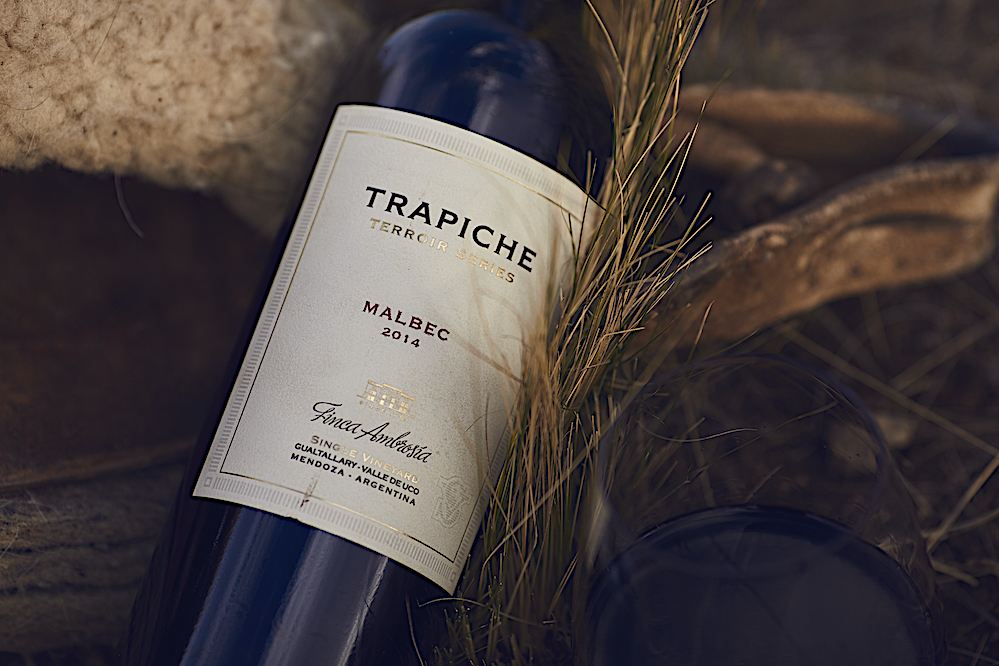 values, there is
a perfect balance between polyphenolic
maturity of the grape, aromas, and structure. These
traits are what give
Argentine wines their uniqueness.
values, there is
a perfect balance between polyphenolic
maturity of the grape, aromas, and structure. These
traits are what give
Argentine wines their uniqueness.
The
pricing on your best wines is very
reasonable in the market. How do you manage to
keep it that way?
Bodega Trapiche's
wines are well known to be of outstanding quality
and competitive prices. Each
of our agronomic, winemaking, and monetary
operations is always scrutinized
with the goal of improving efficiency. To achieve a
healthy technological and
economic balance, we employ cutting-edge
technologies.
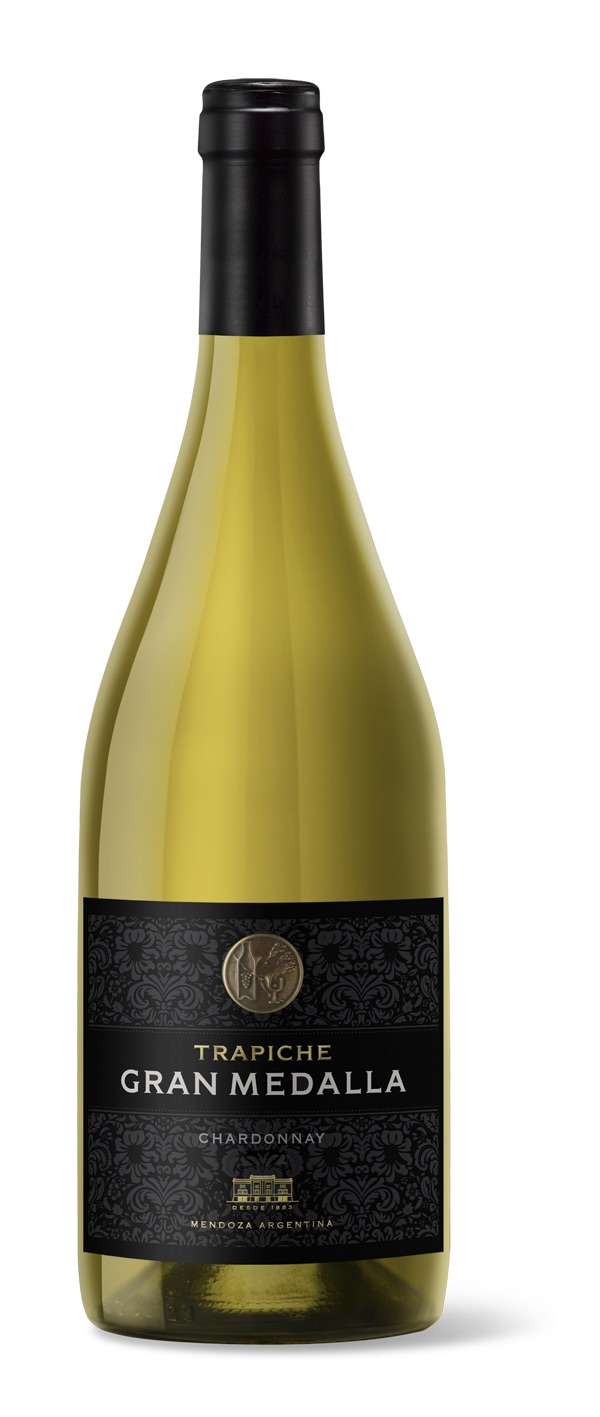 Argentina is experiencing terrible
inflation now of up to 80%. How does the wine
industry cope with that? Are all
international sales in U.S. dollars?
Argentina is experiencing terrible
inflation now of up to 80%. How does the wine
industry cope with that? Are all
international sales in U.S. dollars?
The problem is not
inflation itself, but the fact that the exchange
rate does not increase at the
same velocity. That generates an important problem
because costs in pesos
increase rapidly, and revenue measured in pesos does
not. Even
though sales are in U.S. dollars,
legally companies have to sell these dollars and
transform the income into
pesos. Eventually, a devaluation will happen, and
revenue will catch up, but in
the meantime, export wineries are having a difficult
time, particularly for
entry-level wines.
Tell me about your 100%
Cabernet Sauvignon and why it is not blended with
other Bordeaux-style
varietals.
Our Cabernet
vineyards are sourced from unique regions, such as
the southern region of the
Uco Valley, where our El Milagro vineyard is located
and yields the fruit for
our Trapiche Gran Medalla, or an old vineyard
planted in 1960, like the
Trapiche Terroir Vineyard. The Leon Laborde series
has its own distinct
character and does not need to be blended with any
other Bordeaux grape. These
wines are featured with remarkable generosity, each
containing a distinctive
style that is worthy of admiration and enjoyment on
its own.
Your
highly regarded Iscay Malbec has
some Cabernet Franc in it. Why?
In the past fifteen
years, Cabernet Franc has been cultivated in fertile
soils that, when combined
with the agro-climatic conditions of the Uco Valley,
produce wines of
exceptional elegance and freshness. After this
variety is paired with Malbec
from the upper region of the Uco Valley (Gualtallary
at 1,400 meters), where
the soils are more calcarous, it results in a 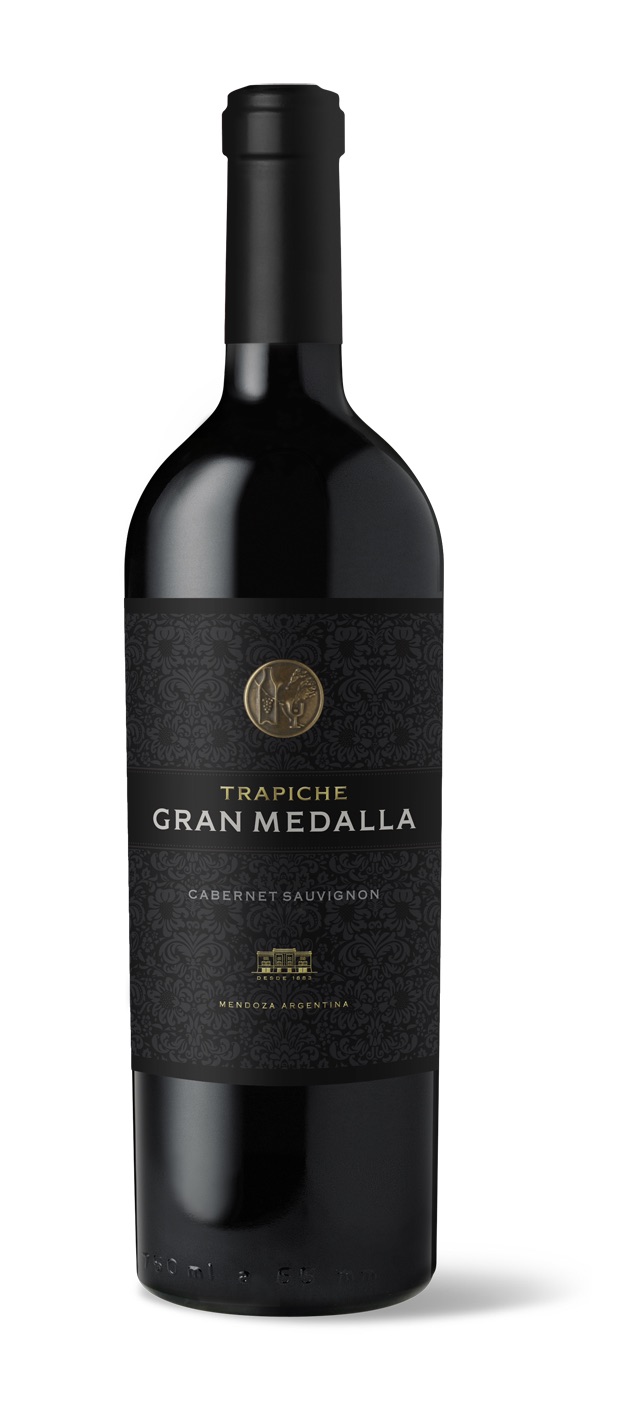 perfect combination of powerful
color and clear aromas of fresh red fruit from
Malbec, transforming Iscay into
one of the greatest wines of Argentina whose
reputation extends beyond
Argentine borders.
perfect combination of powerful
color and clear aromas of fresh red fruit from
Malbec, transforming Iscay into
one of the greatest wines of Argentina whose
reputation extends beyond
Argentine borders.
Are
there many women in the industry,
especially at Trapiche?
My winemaking team
at Trapiche consists of seven persons, four of whom
are women. As an
organization, we hire committed, industry-passionate
professionals.
You
are a member of a fourth-generation
wine family. What experience did you learn in
Europe that affected your
winemaking at Trapiche?
My experience is
centered on the many regions of France and is
complemented by regions of Italy
like Tuscany, where I honed my skills in waiting for
the perfect ripeness and
interpreting each terroir to capture the greatest
expression of the soil in a
glass.
Why was Medalla
created? And Iscay?
In 1983, as a
homage to the winery's 100th anniversary, Trapiche
Medalla, a top-notch wine
made with grapes from the First Zone, was released.
Its essentially old vines
have delivered the most awarded Argentine wines for
decades. The wine was
originally crafted primarily with Cabernet Sauvignon
and minor contents of
Malbec and Merlot, and now, it is also blended with
Cabernet Franc.
Iscay, which means
"two" in Quechua (the original language of the
Andean region),
depicts the union of two components: viticulture, a
bond between the terroir and
the vine, and oenology, a
fusion of Science and Art. This rare Argentine
specimen, an emblem of Trapiche,
is the product of two concepts, a blend of two grape
varieties to achieve the
highest quality grapes and to produce the most
premium wine.
Does
Trapiche have a visitor’s center?
Yes, indeed, it has
an amazing visitor center and a
first-class
restaurant. Trapiche
opened the doors to
their new winery in 2008 and welcomes visitors for
tours daily, from Monday to
Friday, 9am to 5pm, and on Saturdays and Sundays
from 10 am to 3pm. Visit
Trapiche Winery at this address: Nueva Mayorga s/n
street (M5522CHA),
Coquimbito, Maipú
❖❖❖
 FOOD
WRITING 101:TRY NOT TO SOUND LIKE A COMPLETE
NITWIT
FOOD
WRITING 101:TRY NOT TO SOUND LIKE A COMPLETE
NITWIT
"The appetizers alone are too
difficult to choose between. . . . If you don’t
accidentally order all of the appetizers and you
have room for entrees, make sure to choose at
least one of the pasta dishes and either the
unique chamomile-crusted tuna with risotto or the
parmesan-crusted chicken breast with lemon
gnocchi. If you make it this far into the
magnificent feast, you must stay for dessert! You
will magically feel hungry again when it’s time to
choose between a Sicilian zeppole with creamy
ricotta and a Nutella pecan pie with
gelato."—Gabrielle Becchert, How to Celebrate
National Girlfriend's Day in Westchester," Westchester
Magazine (8/22)
❖❖❖
Any of John Mariani's books below may be ordered from amazon.com.
 The Hound in Heaven
(21st Century Lion Books) is a novella, and
for anyone who loves dogs, Christmas, romance,
inspiration, even the supernatural, I hope you'll find
this to be a treasured favorite. The story
concerns how, after a New England teacher, his wife and
their two daughters adopt a stray puppy found in their
barn in northern Maine, their lives seem full of promise.
But when tragedy strikes, their wonderful dog Lazarus and
the spirit of Christmas are the only things that may bring
his master back from the edge of despair.
The Hound in Heaven
(21st Century Lion Books) is a novella, and
for anyone who loves dogs, Christmas, romance,
inspiration, even the supernatural, I hope you'll find
this to be a treasured favorite. The story
concerns how, after a New England teacher, his wife and
their two daughters adopt a stray puppy found in their
barn in northern Maine, their lives seem full of promise.
But when tragedy strikes, their wonderful dog Lazarus and
the spirit of Christmas are the only things that may bring
his master back from the edge of despair. WATCH THE VIDEO!
“What a huge surprise turn this story took! I was completely stunned! I truly enjoyed this book and its message.” – Actress Ali MacGraw
“He had me at Page One. The amount of heart, human insight, soul searching, and deft literary strength that John Mariani pours into this airtight novella is vertigo-inducing. Perhaps ‘wow’ would be the best comment.” – James Dalessandro, author of Bohemian Heart and 1906.
“John Mariani’s Hound in Heaven starts with a well-painted portrayal of an American family, along with the requisite dog. A surprise event flips the action of the novel and captures us for a voyage leading to a hopeful and heart-warming message. A page turning, one sitting read, it’s the perfect antidote for the winter and promotion of holiday celebration.” – Ann Pearlman, author of The Christmas Cookie Club and A Gift for my Sister.
“John Mariani’s concise, achingly beautiful novella pulls a literary rabbit out of a hat – a mash-up of the cosmic and the intimate, the tragic and the heart-warming – a Christmas tale for all ages, and all faiths. Read it to your children, read it to yourself… but read it. Early and often. Highly recommended.” – Jay Bonansinga, New York Times bestselling author of Pinkerton’s War, The Sinking of The Eastland, and The Walking Dead: The Road To Woodbury.
“Amazing things happen when you open your heart to an animal. The Hound in Heaven delivers a powerful story of healing that is forged in the spiritual relationship between a man and his best friend. The book brings a message of hope that can enrich our images of family, love, and loss.” – Dr. Barbara Royal, author of The Royal Treatment.
 |
The Encyclopedia of American Food and Drink by John F. Mariani (Bloomsbury USA, $35) Modesty forbids me to praise my own new book, but let me proudly say that it is an extensive revision of the 4th edition that appeared more than a decade ago, before locavores, molecular cuisine, modernist cuisine, the Food Network and so much more, now included. Word origins have been completely updated, as have per capita consumption and production stats. Most important, for the first time since publication in the 1980s, the book includes more than 100 biographies of Americans who have changed the way we cook, eat and drink -- from Fannie Farmer and Julia Child to Robert Mondavi and Thomas Keller. "This book is amazing! It has entries for everything from `abalone' to `zwieback,' plus more than 500 recipes for classic American dishes and drinks."--Devra First, The Boston Globe. "Much needed in any kitchen library."--Bon Appetit. |
"Eating Italian will never be the same after reading John Mariani's entertaining and savory gastronomical history of the cuisine of Italy and how it won over appetites worldwide. . . . This book is such a tasteful narrative that it will literally make you hungry for Italian food and arouse your appetite for gastronomical history."--Don Oldenburg, USA Today. "Italian
restaurants--some good, some glitzy--far
outnumber their French rivals. Many of
these establishments are zestfully described
in How Italian Food Conquered the World, an
entertaining and fact-filled chronicle by
food-and-wine correspondent John F.
Mariani."--Aram Bakshian Jr., Wall Street
Journal.
"Equal parts
history, sociology, gastronomy, and just
plain fun, How Italian Food Conquered the
World tells the captivating and delicious
story of the (let's face it) everybody's
favorite cuisine with clarity, verve and
more than one surprise."--Colman Andrews,
editorial director of The Daily
Meal.com. "A fantastic and fascinating
read, covering everything from the influence
of Venice's spice trade to the impact of
Italian immigrants in America and the
evolution of alta cucina. This book will
serve as a terrific resource to anyone
interested in the real story of Italian
food."--Mary Ann Esposito, host of PBS-TV's
Ciao
Italia. "John Mariani has written the
definitive history of how Italians won their
way into our hearts, minds, and
stomachs. It's a story of pleasure over
pomp and taste over technique."--Danny Meyer,
owner of NYC restaurants Union Square
Cafe, The Modern, and Maialino.
|
 |
 |
 |
 |
 |
 |
 Everett Potter's Travel Report:
Everett Potter's Travel Report: 
 Eating Las
Vegas
Eating Las
Vegas
MARIANI'S VIRTUAL GOURMET
NEWSLETTER is published weekly. Publisher: John Mariani. Editor: Walter Bagley. Contributing Writers: Christopher
Mariani, Misha Mariani, John A. Curtas, Gerry Dawes, Geoff Kalish.
Contributing
Photographer: Galina Dargery. Technical
Advisor: Gerry
McLoughlin.
If you wish to subscribe to this
newsletter, please click here: http://www.johnmariani.com/subscribe/index.html
© copyright John Mariani 2022
